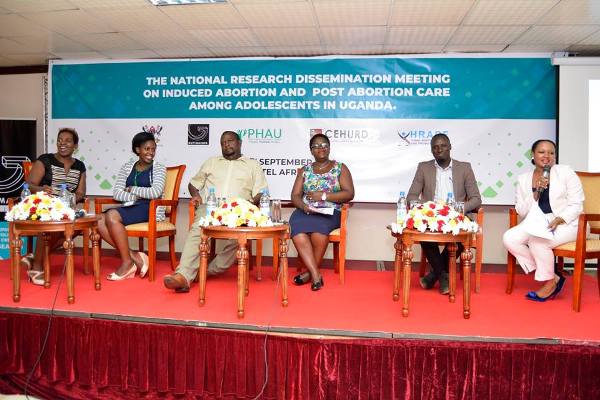A study carried out by experts on sexual and reproductive health from Guttmacher Institute and partners have revealed that in Uganda, sexual and reproductive health services and information fall short for adolescents, noting that a comprehensive approach is essential to improve the well-being of young women.
The authors recommend taking a coordinated and multifaceted approach to improve adolescents’ sexual and reproductive health in Uganda including youth-centered health programs that must be nondiscriminatory and medically accurate, as well as developmentally and culturally appropriate. They say that approaches should include improving access to and quality of comprehensive sexuality education as well as sexual and reproductive health services, both in and outside of the school setting
The new data from the Guttmacher Institute show serious gaps in sexual and reproductive health services for adolescent women in Uganda.
It shows that an estimated 648,000 women aged 15–19 in Uganda are sexually active and do not want a child in the next two years.
However, among this group, over 60% have an unmet need for modern contraception, meaning that they either use no contraceptive method or use a traditional method of contraception.
Patrick Segawa from The Public Health Ambassadors Uganda (PHAU), says “Greater investment is essential to ensure that young people have access to age-appropriate, comprehensive sexuality education, as well as high-quality sexual and reproductive health services. Young people must be empowered to make informed sexual and reproductive health decisions in order to achieve their full potential.”
Taylor Riley, a research associate at the Guttmacher Institute and co-investigator of the new estimates says that investing in meeting the need for both modern contraception and maternal and newborn health care would also save costs compared to focusing on maternal and newborn health care alone. Adding that because the cost of preventing an unintended pregnancy through use of modern contraception is far lower than the cost of providing care for an unintended pregnancy, each additional dollar spent on contraceptive services above the current level would reduce the cost of maternal and newborn health care by $2.56
“Too often, the various components of sexual and reproductive health are treated as separate issues, but they are all interrelated. Addressing adolescents’ unmet need for modern contraception along with providing all pregnant adolescents and their newborns with recommended levels of care are both critical to save lives and improve young people’s health and well-being,” says Taylor Riley.
By Drake Nyamugabwa





